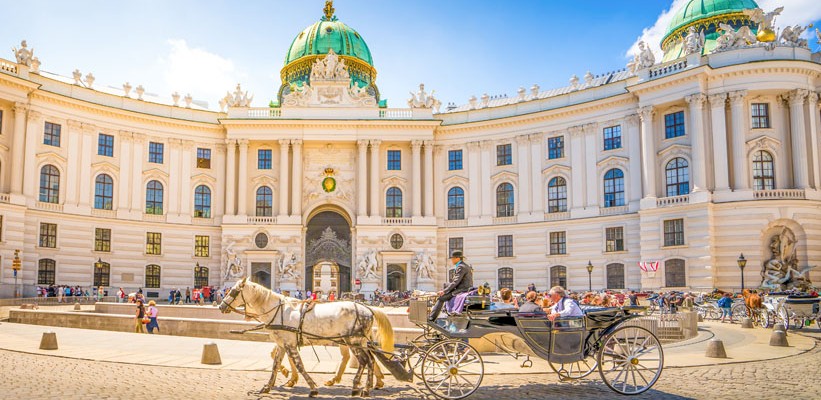Book a flight to Austria, one of Europe’s most popular holiday destinations, enticing travellers all through the year, and winter is nearly as hectic as summer in the striking mountain districts. Tourist are pulled here as much for the picturesque charm of this Alpine nations districts as they are for magnificent metropolises such as; Vienna (Wien), the ancient metropolis, and stunning Salzburg, the place of origin of Wolfgang Amadeus Mozart. One of Europe’s tiniest destinations, Austria is mainly a country of high ground regions and tall peaks, with the Eastern Alps inhabiting a greater 60 percent of its domain.
The Vienna Hofburg: Austria’s Imperial Palace.
The striking Hofburg Palace in Vienna was for many years the base of Austria’s kingship, the strong Habsburgs. Presently the President handles state business in the same quarters that once was owned by Emperor Joseph II. Almost every Austrian governor since 1275 instructed inclusions or changes, developing various distinct structural impacts, also Gothic, Renaissance, Baroque, Rococo, and Classicism. Along with its quads and gardens, the whole Hofburg compound inhabits 59 acres surrounding 19 squares and 2,600 rooms. Features of a tour consists of the Imperial Silver Collection and a range of banquet services offering a sample of the sumptuous royal dinners that once occurred here; the Sisi Museum, concentrating on the life and period of Empress Elisabeth; and the Royal Apartments, a sequence of 19 rooms once inhabited by Emperor Franz Joseph and his wife.
The Emperor’s Tomb: Hofkirche and the Museum of Maximilian I.
Innsbruck is the residents to the Hofkirche, or Court Church, with its breathtaking Tomb of Emperor Maximilian I who passed away in 1519. Broadly reviewed as the quality work of German Renaissance carving, the memorial’s main characteristic is the huge black marble casket with a bronze form of the Emperor. Beside the casket are 24 marble reassurances portraying occurrences in the Emperor’s life, and surrounding it stand 28 enormous bronze figurines of the Emperor’s forefathers and peers (search for King Arthur). Additional pieces of carvings comprise of 23 bronze figurines of saints from the Habsburg family and 20 bronze chests of Roman rulers. Innsbruck also has the Maximilianeum, a museum of antiques from the life of Emperor Maximilian counting the genuine records and goods.
The Spanish Riding School, Vienna.
The Spanish Riding School goes back to the period of Emperor Maximilian II, the man accountable for presenting the popular Lipizzaner horses into Austria during 1562. Currently, it’s the only site where the Classical manner of riding favoured by the elite is still executed. Watching the popular mounted shows in the Baroque Winter Riding School – held here since the period of Charles VI – is a must see when in Vienna. Constructed in 1735, the splendid hall was created for the upper class to show their riding abilities. Tickets are popular, so book online way ahead of time.
Kitzbüheler Horn.
At 1,998 meters, the Kitzbüheler Horn in the Tyrol district is one of the most attractive of Austria’s countless peaks. Approachable by cableway through the Pletzeralm or by ascending from the village of Kitzbühel, the peak supplies marvellous sights: to the south from the Radstädter Tauern to the Ötztal Alps; to the north, the neighbouring Kaisergebirge; to the west, the Lechtal Alps; and to the east, the Hochkönig. To the south of the Kitzbüheler Horn soars the 1,772-meter-tall Hornköpfli, also accessible by cableway. Besides the brilliant sights, on the peak, you’ll discover the Gipfelhaus, a distinctive hilltop house; a church; an eatery; and an Alpine garden. Throughout the ski season, the mountains in the nearest region of Kitzbühel is busy with skiers from all around the globe.






